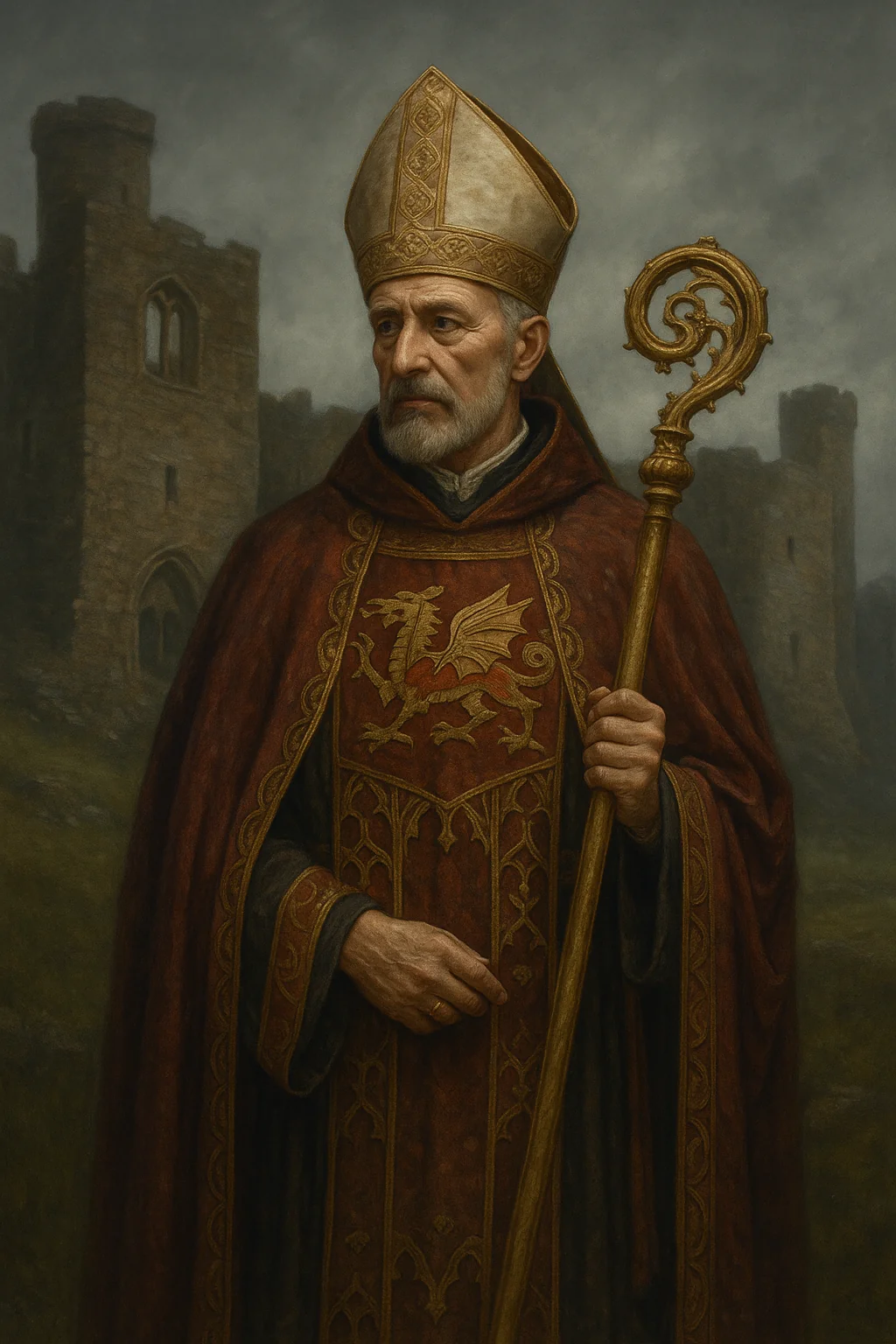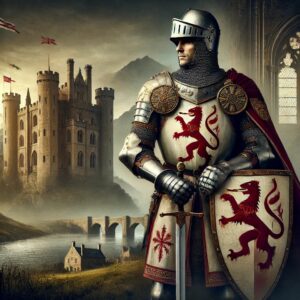A Bishop, A Builder, and A Figure of Influence
Bishop Henry de Gower is remembered not just as a religious leader but as a visionary builder who left an indelible mark on medieval Wales. He served as Bishop of St. Davids from 1328 to 1347. His name is tied to some of Wales’ most significant architectural achievements, including the grand Llawhaden Castle and the stunning Bishop’s Palace at St. Davids.
In my previous blog on Llawhaden Castle (explore the ghostly legends of Llawhaden here), I explored the eerie stories surrounding the site, including tales of a ghostly bishop who still roams its ruins. Now, let’s uncover the real story behind the man who built its grand halls and fortifications—Bishop Henry de Gower.
This post continues my series on historical figures who shaped Welsh castles. You can also read about Sir John Perrot here.
A Bishop in Tumultuous Times
Henry de Gower rose to prominence during a time of political instability in both Wales and England. The early 14th century saw conflicts between Welsh lords and the English Crown, as well as disputes over church authority. Despite the turbulence, Bishop de Gower was a man of ambition. He was determined to solidify both his spiritual and temporal power.
Many bishops of his era focused solely on religious duties. But de Gower expanded his influence through architecture. He transformed St. Davids and its surrounding lands into a powerful center of both faith and governance.
The Architectural Legacy of Bishop Henry de Gower
One of de Gower’s greatest contributions was his extensive building projects. These reshaped St. Davids Cathedral and the surrounding structures. His legacy includes:
- The Bishop’s Palace at St. Davids – A masterpiece of medieval architecture, featuring grand halls, decorative arcades, and elaborate stone carvings. Built as a residence and administrative center, it symbolized the wealth and authority of the bishopric.
- Llawhaden Castle – More than just a defensive fortress, de Gower transformed it into a luxurious bishop’s palace, complete with great halls, ornate windows, and comfortable living quarters.
- Fortifications and Roads – He also commissioned improvements to roads, bridges, and defensive structures throughout his lands. This ensured better control over trade and local governance.
De Gower’s designs combined military strength with elegance. They demonstrate his dual role as both a spiritual leader and a political figure.
A Man of Power and Controversy
While Bishop Henry de Gower was undoubtedly a skilled administrator and visionary, not all viewed him favorably. Some criticized his lavish spending on construction projects, arguing that he prioritized worldly power over spiritual guidance. Others saw him as a shrewd politician. They believed he used his position to cement influence rather than serve the Church’s higher calling.
Despite these critiques, his impact on Wales remains undeniable. Today, visitors continue to flock to his castles, palaces, and cathedrals. These structures stand as monuments to his ambition and legacy.
Did Bishop Henry de Gower’s Spirit Remain Behind?
Legends persist that de Gower’s spirit never truly left his creations. In Llawhaden Castle, some claim to see a shadowy figure in bishop’s robes. Others report a sense of unease in the grand halls of his palace at St. Davids.
Is this just folklore, or could it be that his restless spirit still lingers, watching over the structures he built?
Disclaimer: The ghost stories shared here are based on local legends and not verified historical fact.
Where to Next?
Bishop Henry de Gower was not just a church leader, but a man who shaped Wales’ medieval landscape. His story is one of faith, power, and lasting influence.
But there are more fascinating figures to uncover. Next, I will explore the life of William Marshal, the legendary Earl of Pembroke, whose role in shaping both Welsh and English history cannot be ignored.
Read his incredible story in the next post and continue this journey through Welsh history!
Call to Action
Love learning about historical figures who shaped Wales and Britain? Share this blog on social media and join the conversation!
Want to explore more about Wales’ most fascinating historical figures and castles? Visit my website: brianwelsh500.com for more blogs, photos, and insights!




